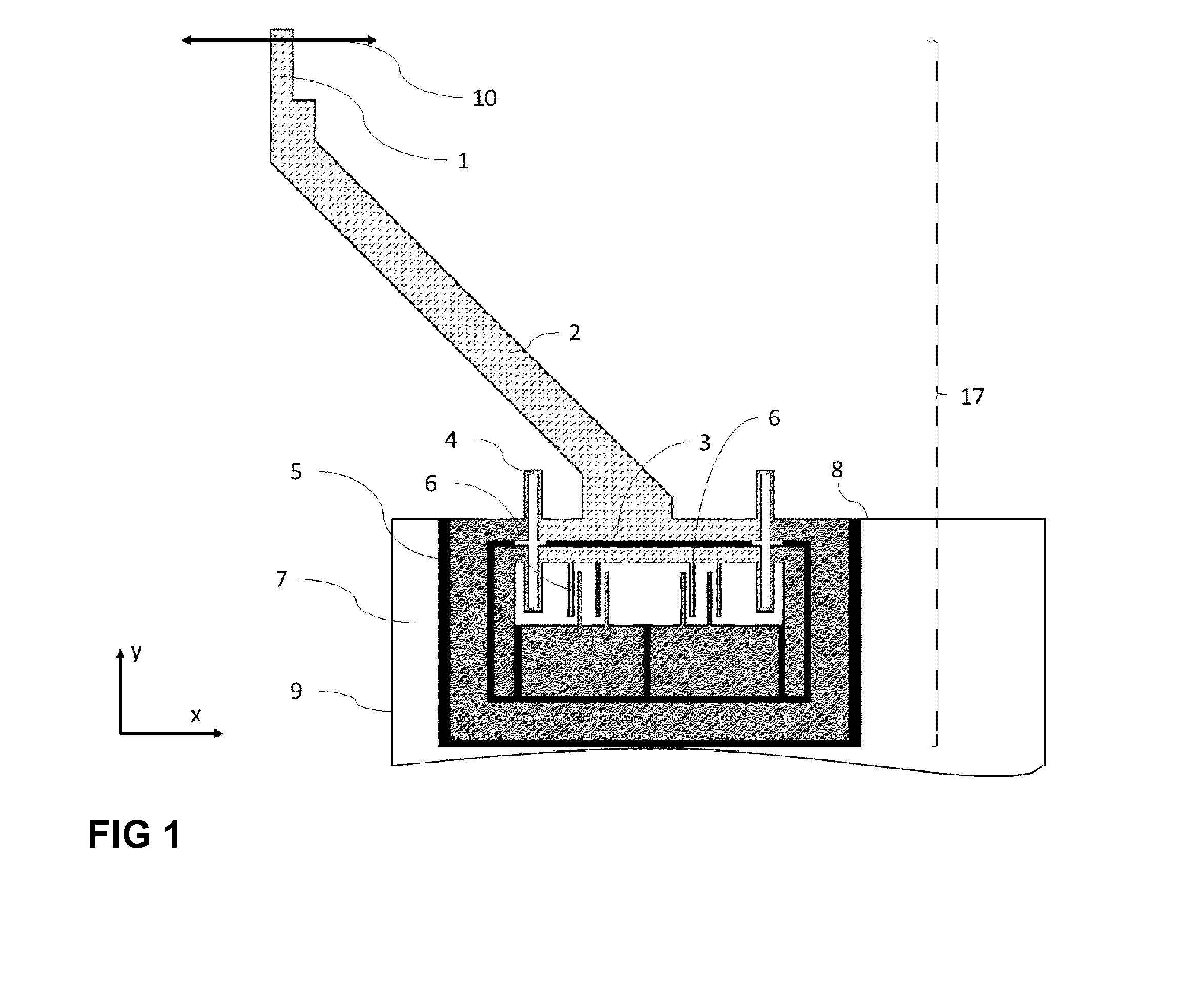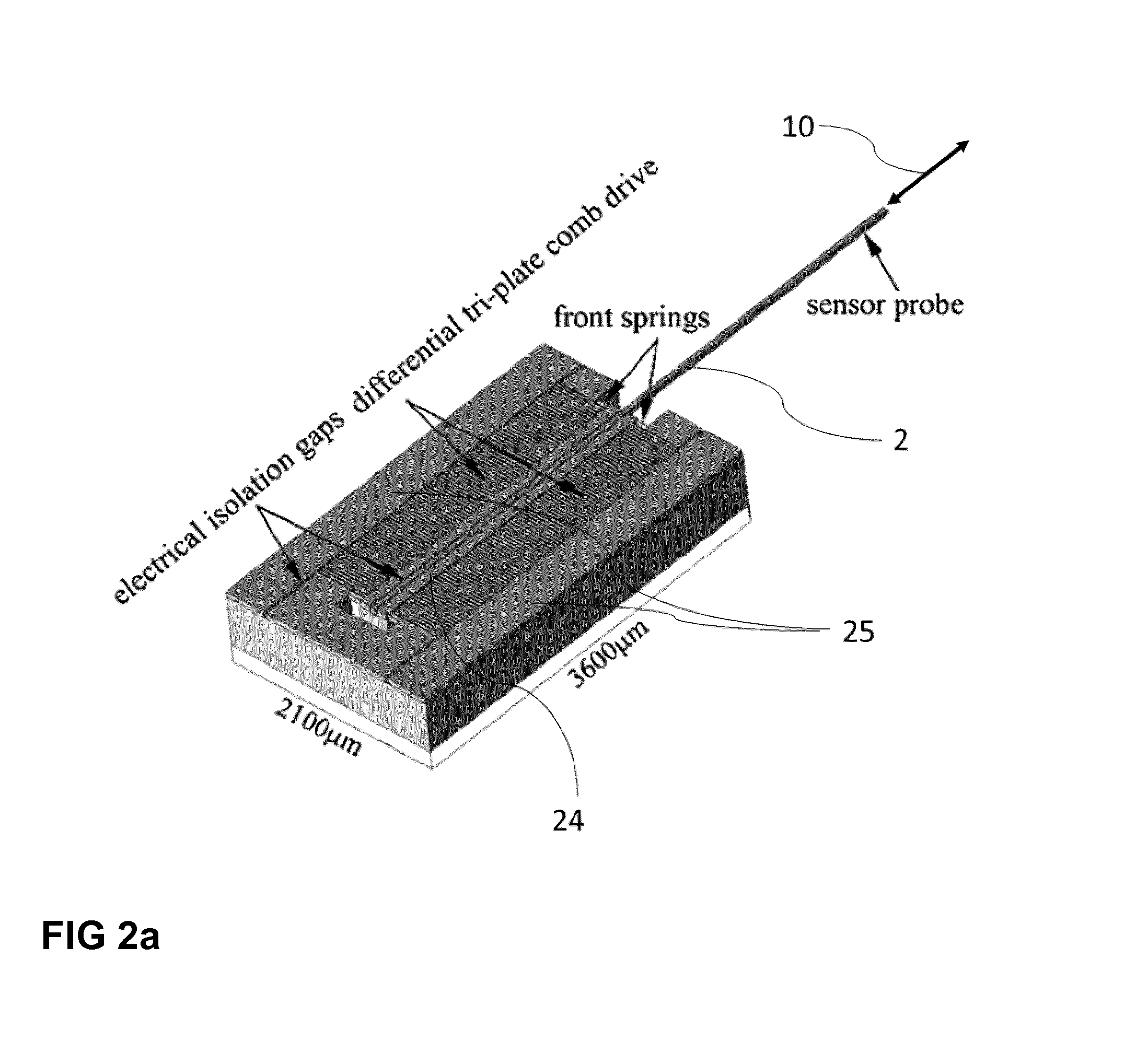Sub-Millinewton Capacitive Mems Force Sensor for Mechanical Testing on a Microscope
a capacitive mems force sensor and microscope technology, applied in the direction of force/torque/work measurement apparatus, measurement devices, instruments, etc., can solve the problems of high cost, limited number of applications for which the sensor can be used, and inconvenient configuration
- Summary
- Abstract
- Description
- Claims
- Application Information
AI Technical Summary
Benefits of technology
Problems solved by technology
Method used
Image
Examples
Embodiment Construction
[0012]For a more complete understanding of the present disclosure, and the advantages thereof, reference is now made to the following descriptions taken in conjunction with the accompanying drawings, in which:
[0013]FIG. 1 depicts a capacitive MEMS sensor in a schematic view;
[0014]FIG. 2a depicts a depicts a prior art sensor by Sun Yu et al.;
[0015]FIG. 2b depicts a capacitive MEMS sensor with some geometrical indications;
[0016]FIG. 3 depicts the electrical and mechanical sensor buildup;
[0017]FIG. 4a depicts the mechanical testing using prior art sensors;
[0018]FIG. 4b depicts the mechanical testing using the sensor design according to the invention;
[0019]FIG. 5a depicts a prior art sensor;
[0020]FIG. 5b depicts an embodiment of the invention;
[0021]FIG. 5c depicts an alternative embodiment of the invention.
[0022]FIG. 1 shows a schematic view of the force sensor design. FIG. 3 shows the electrical and mechanical buildup. The basic working principle is the following: A force is applied to...
PUM
 Login to View More
Login to View More Abstract
Description
Claims
Application Information
 Login to View More
Login to View More - R&D
- Intellectual Property
- Life Sciences
- Materials
- Tech Scout
- Unparalleled Data Quality
- Higher Quality Content
- 60% Fewer Hallucinations
Browse by: Latest US Patents, China's latest patents, Technical Efficacy Thesaurus, Application Domain, Technology Topic, Popular Technical Reports.
© 2025 PatSnap. All rights reserved.Legal|Privacy policy|Modern Slavery Act Transparency Statement|Sitemap|About US| Contact US: help@patsnap.com



